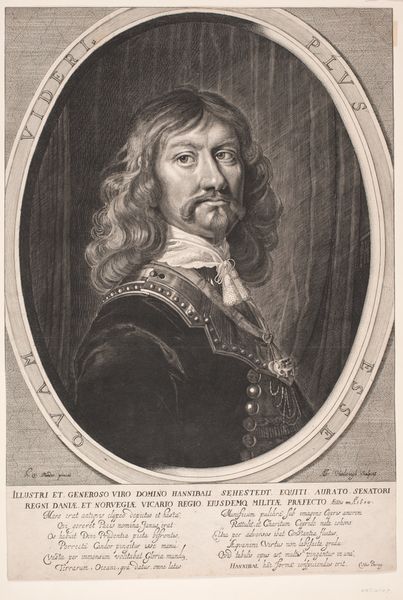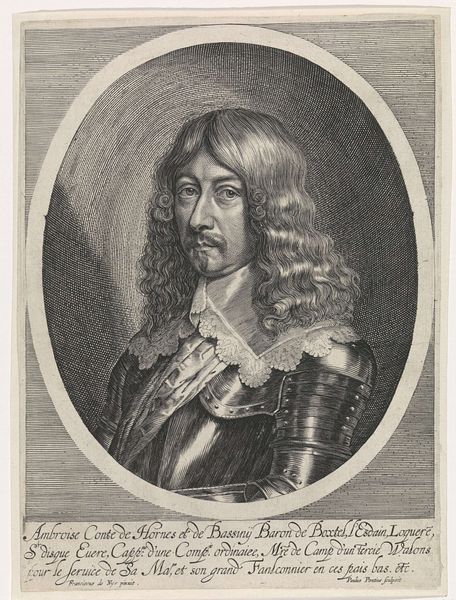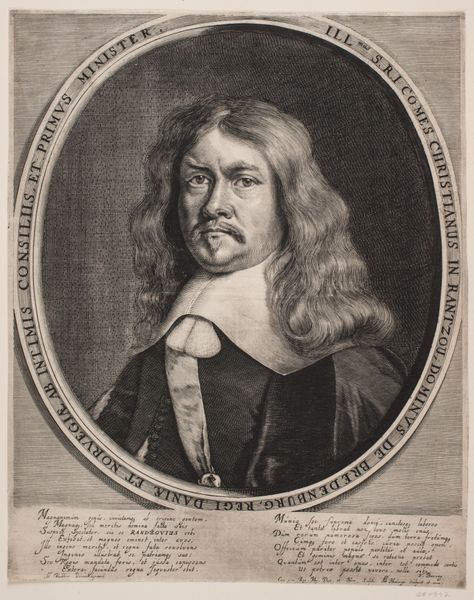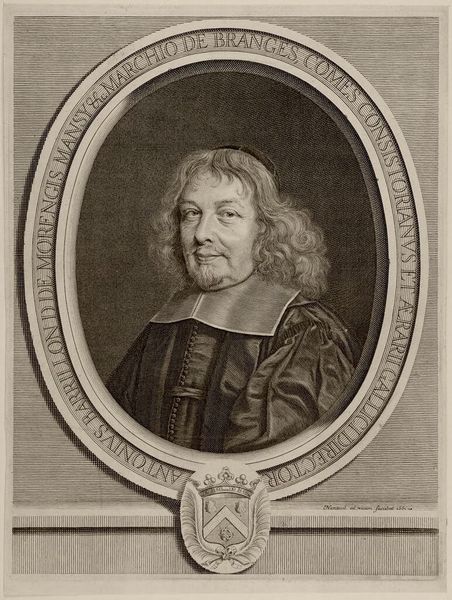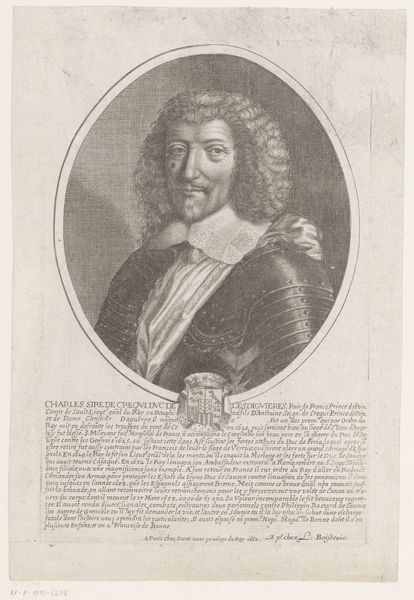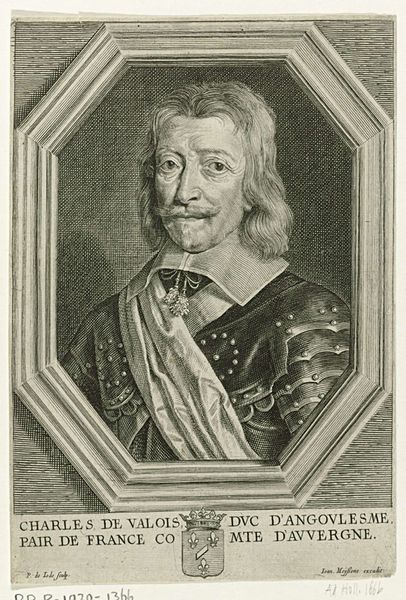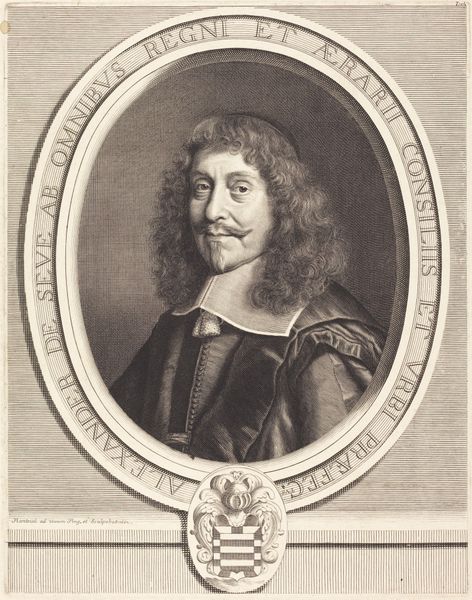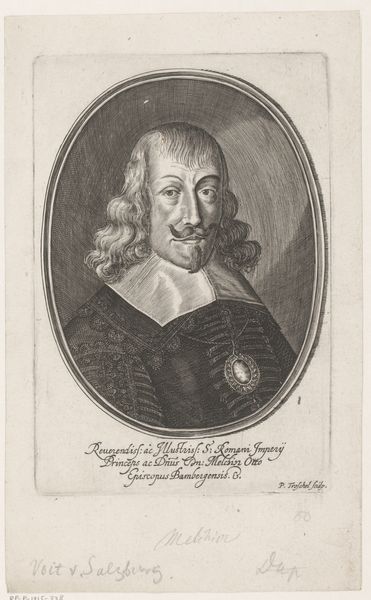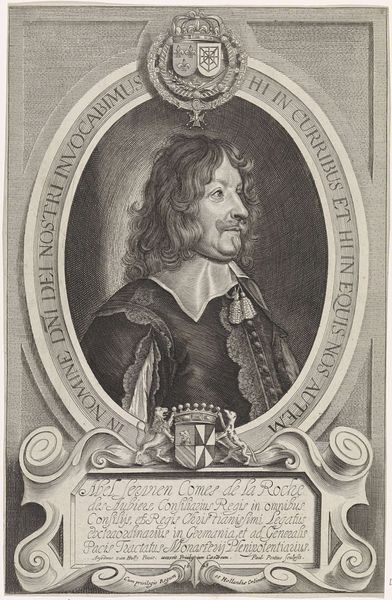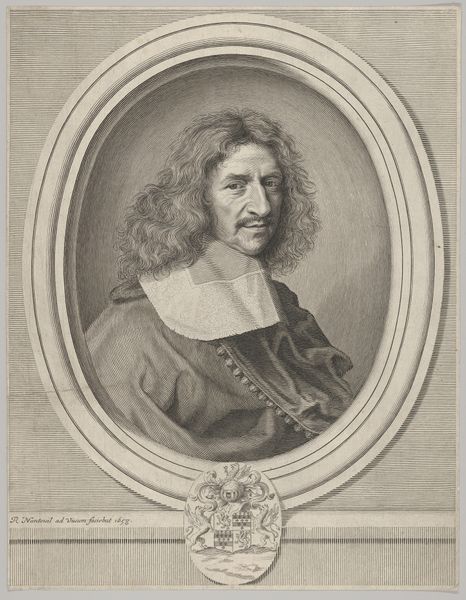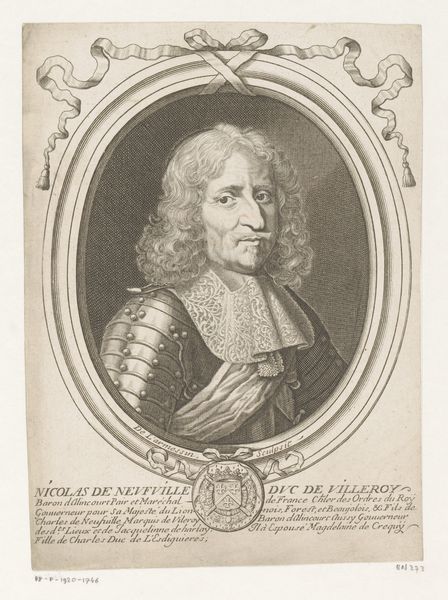
print, engraving
#
portrait
#
baroque
# print
#
engraving
Dimensions: 575 mm (height) x 402 mm (width) (plademaal)
Editor: We are looking at Albert Haelwegh's "Hannibal Sehested," an engraving from 1650. The oval composition is interesting and how it traps the subject. I’m curious about the stylistic choices; how would you interpret the visual elements present in this print? Curator: Focusing solely on the visual composition, note how the lines of the engraving define the form, creating depth through the strategic use of light and shadow. Consider the oval frame – it contains the subject and dictates how the eye travels around the work, doesn't it? What of the gaze? Where does that take you, the viewer? Editor: His eyes? Yes. His gaze follows you around the room. Is it the artist's intention to unsettle the viewer by focusing the gaze in the composition? Curator: The gaze is a fundamental compositional tool, drawing the viewer into a relationship, dictating perspective and engagement. Consider too how the light falls – illuminating certain features and obscuring others, creating a deliberate focal point, and manipulating visual interest. Editor: I notice that the framing of the figure cuts him off mid-torso. Could the cropped image be interpreted as fragmentation? Curator: An astute observation. Indeed, the cropping isolates the figure, emphasizing the head and shoulders. Notice how this contrasts the textures, such as hair, and fabric; how the eye roves around the subject's features within a deliberate field of vision. Editor: That's fascinating, I didn't think of the image as a fragment, as such. Curator: By examining these choices, we understand the artist’s deliberate control over form and structure. What at first appeared like a mere portrait becomes a fascinating investigation of light, form, and spatial arrangement.
Comments
No comments
Be the first to comment and join the conversation on the ultimate creative platform.

